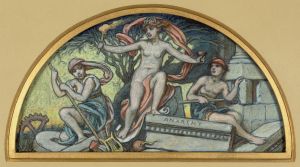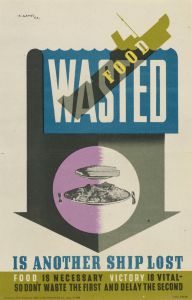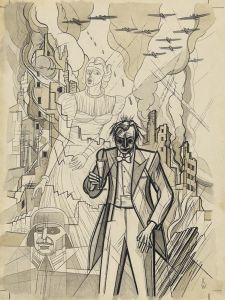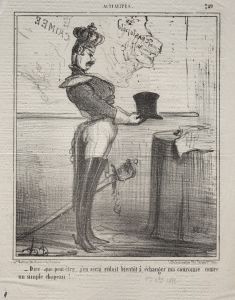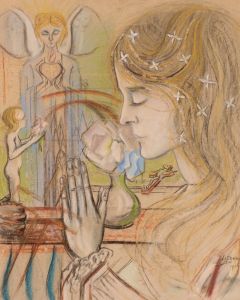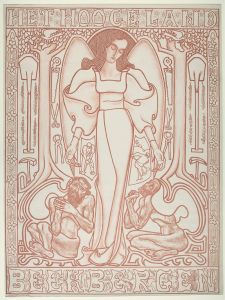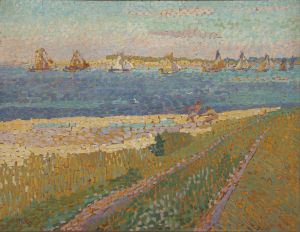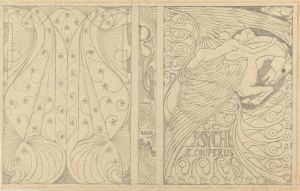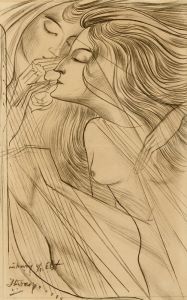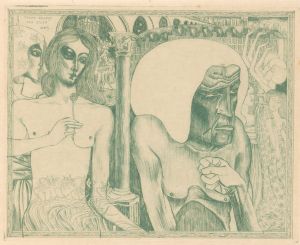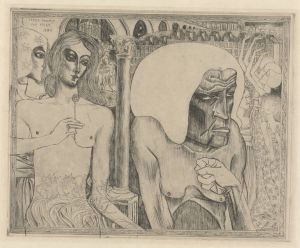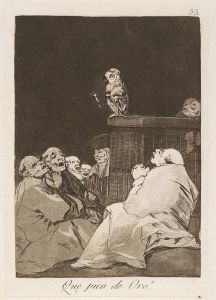
De Anarchie
A hand-painted replica of Jan Toorop’s masterpiece De Anarchie, meticulously crafted by professional artists to capture the true essence of the original. Each piece is created with museum-quality canvas and rare mineral pigments, carefully painted by experienced artists with delicate brushstrokes and rich, layered colors to perfectly recreate the texture of the original artwork. Unlike machine-printed reproductions, this hand-painted version brings the painting to life, infused with the artist’s emotions and skill in every stroke. Whether for personal collection or home decoration, it instantly elevates the artistic atmosphere of any space.
Jan Toorop was a Dutch-Indonesian painter born on December 20, 1858, in Purworejo, Java, then part of the Dutch East Indies. He is known for his Symbolist works and his role in the development of Art Nouveau in the Netherlands. One of his notable works is "De Anarchie" (The Anarchy), created in 1893.
"De Anarchie" is a striking example of Toorop's Symbolist style, characterized by its intricate lines and complex composition. The painting reflects the social and political unrest of the time, capturing the chaotic and tumultuous spirit of the late 19th century. Toorop's use of symbolism and allegory in this work is evident, as he often incorporated themes of social change, spirituality, and the human condition into his art.
The painting features a central figure, often interpreted as a representation of anarchy or chaos, surrounded by a swirling mass of figures and shapes. The composition is dense and dynamic, with a sense of movement and energy that conveys the instability and unpredictability of the era. Toorop's use of line and form is particularly notable, as he employs a sinuous, almost calligraphic style that adds to the sense of fluidity and motion in the piece.
"De Anarchie" is also significant for its reflection of Toorop's personal beliefs and experiences. As an artist deeply influenced by the Symbolist movement, Toorop was interested in exploring the deeper, often hidden meanings behind the visible world. His work frequently delved into themes of mysticism, spirituality, and the subconscious, and "De Anarchie" is no exception. The painting can be seen as a visual representation of the inner turmoil and existential questions that preoccupied Toorop and many of his contemporaries.
In addition to its Symbolist elements, "De Anarchie" also shows the influence of other artistic movements and styles. Toorop was known for his eclectic approach, drawing inspiration from a wide range of sources, including Javanese art, Japanese prints, and the works of other European artists. This synthesis of different influences is evident in the intricate patterns and decorative elements that adorn the painting, as well as in the overall composition and aesthetic.
"De Anarchie" is housed in the Kröller-Müller Museum in Otterlo, Netherlands, which holds one of the most extensive collections of Toorop's work. The museum's collection provides valuable insight into the artist's development and the broader context of his career, showcasing his evolution from early Impressionist influences to his mature Symbolist style.
Jan Toorop's "De Anarchie" remains an important work in the history of modern art, exemplifying the innovative and experimental spirit of the late 19th and early 20th centuries. Through its complex symbolism, dynamic composition, and rich interplay of influences, the painting continues to captivate and inspire viewers, offering a window into the turbulent and transformative period in which it was created.





